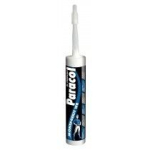- Home
-
Wall & Ceiling Panels, Skirting & Architrave, Laminate Flooring
- Home
- Wall & Ceiling Panels, Skirting & Architrave, Laminate Flooring
-
Wall & Ceiling Panels
- Home
- Wall & Ceiling Panels, Skirting & Architrave, Laminate Flooring
- Wall & Ceiling Panels
- View All Wall & Ceiling Panels
- Pannello Wall Panels
- 5mm Wall Panels
- 8mm Wall Panels
- 10mm Wall Panels
- Zest ZX Wall Panels
- Zest Shower Wall Panels
- SolidCore
- Ceiling Panels
- Bathroom Wall Panels
- Kitchen Wall Panels
- Tile Effect Bathroom Wall Panels
- CLADDING FITTING GUIDE
- Skirting & Architraves
- Silicone, Adhesives and Cleaners
- Laminate Flooring
- Sulcado Slat Wall Panels
- Wall Panel Trims
- Hygiene Cladding
- Brochures
- FITTING INSTRUCTIONS VIDEOS
- Fascia Soffits Guttering, EPDM Roofing, Exterior Wall Cladding
- Polycarbonate, Window Boards & UPVC Hardware
- Composite Decking, Balustrades, Fencing, Gates & Grass
- Underground & Drainage
- Featured Products
- homepage-brands
- Blog
- Careers
- Go to Quotes
Login / Register
Quotations
Quick Order Apply for a trade credit account
MENU
Quotes
0


Call for all queries:
033 33 606 707WHAT IS A FASCIA BOARD?
Posted on 26/04/21
A Fascia board is a long horizontal board that runs around the edge of a roof, where the roof meets the outer walls of a building. A fascia board overhangs the wall of a building to bridge the gap between the walls and the roof, and provides a clean, tidy and refined finish to any building. The fascia is usually used with a soffit or an “eave”, which is found between the board and the rafter. It has no specific use, but it gives a clean look to your house and covers unattractive rafters.
The purpose of a fascia board is to ensure no moisture enters the roof or interior of any building. They also help to secure the last row of roof tiles on a building and carry the guttering system, so it is imperative that the fascia board is sturdy to withstand the weight of any rainfall.
Traditionally Facia boards were made of timber, but uPVC has become the material of choice in recent years for many reasons which can be explained further below.
uPVC fascia boards come in a wide range of styles, colours, and sizes, so they can be matched to all styles of buildings.
What are the advantages of a uPVC Fascia Board?
- Fascia boards require a limited amount of maintenance, they simply require wiping over with a damp cloth every few years.
- uPVC is the material used for modern plastic doors and windows and it’s resistant against moisture so there is no risk of degradation, rot or mould.
- uPVC comes with a good guarantee / warranty, often between 10 and 20 years.
- uPVC Fascia’s come in an array of colours, styles and sizes, and it is even possible to purchase ones that realistically resemble wood.
- uPVC Fascia boards are lightweight which aides in a speedier installation.
- uPVC Fascia boards often improves the appearance of a building, they have a clean refined edge.
uPVC Facias allow you to conceal any possible entrances to your roof, preventing animals sneaking into your property.




